[toc] A few days ago, I got this email from a researcher. “Hi, I’m doing an eval of a math program, 1 focus group with max 8 grad teaching assistants, 1-2 focus groups with students in intro math classes. 60 min each (max 3 60 min sessions). What kind of recording equipment/software would I need? Thanks, [Maggie].”
I’ve been meaning to write a detailed post on how to record focus group discussions, but seem to never get to it! And this is the 3rd researcher that has emailed me asking for advice on how to record focus group discussion in the past 3 months!
And recording focus groups can be tricky. You’ll have a room with 4-15 participants and making sure you clearly record each one of their responses is challenging. A couple of disclaimers. This is not a post on how to conduct focus group discussions. So don’t expect the do’s and don’ts of conducting focus groups. If that’s what you’re looking for, a quick Google search should sort you out. I’m going to focus (pun intended) on 3 different ways you can record your focus group discussions.
Which leads me to the second disclaimer. This is not an in-depth post on how to video record focus group discussions. That would make this post too long! However, if you want me to write an in-depth guide on to record your focus groups using video camera(s), please leave a comment below, or shoot me an email, and I’ll be happy to.
With that out of the way, there’re 3 things that determine how you are going to record your focus group: speaker identification; number of participants per focus group; location. In the planning stages of your qualitative research you should have a good idea of whether or not you are going to need speaker identification, maximum number of participants in each focus group, and possible location(s) where you are going to conduct them. Let’s look at each one of these factors in depth.
3 Things to Consider
Speaker Identification
This is really important -especially if you plan to get the focus group audio transcribed. In my experience, most researchers don’t plan for speaker identification before they record their focus groups – which is a real shame. Why is it crucial that you decide beforehand if you’ll need speaker identification? Because, the only way you or your transcribe can track the participants with 100% accuracy is if you video record the focus group. Simply put, if you need the focus group participants to be tracked and identified, you’ll need to video record your focus groups.
Now, there’s speaker identification and speaker differentiation. In transcription, speaker identification is where each participant is identified, either by their name, pseudonym, or simply as participant 1, 2, 3…. Different transcription companies differentiate speakers in different ways. At Weloty, and for a majority of our clients, we first differentiate the facilitator from the participants, and then we differentiate the participants by gender in the transcripts.
The methodology and goals of your research study determine whether or not you are going to need speaker identification. Speaker differentiation is sufficient for most qualitative research studies. But there’re instances, for example if you plan to conduct follow up interviews with the focus group participants, when you’ll need speaker identification. And from my experience, the easiest way for your transcriber to accurately identify speakers is from a video recording of the focus group.
There’re a couple of alternatives to video recording your focus group. You can get the participants to say their name, pseudonym or identifier every time they speak: “This is Laurie and…” “Mark here and I think…” A few of the researchers we’ve worked with have tried this method, but it’s fraught with errors. Because, not surprisingly, most participants forget to say their name before they speak!
Another alternative is to have your focus group note taker, also known as a recorder, to log in all the speaker changes. As you can imagine, this is very difficult for medium to large focus groups where participants talk over each – which happens all the time. So if you need speaker identification of your focus group participants, and most researchers don’t, I strongly recommend you look into video recording your focus group discussions.
Number of Participants in Each Focus Group
As you can imagine, how you record a focus group with 2 or 3 participants is very different from how you record a focus group with 40 participants. And yes, we’ve transcribed focus group with 40 plus participants! So knowing the approximate size of each focus group will determine how you record discussions.
Digital recorders are perfect for small focus groups, max 6 participants. For medium sized groups, max 18 participants, boundary microphones work very well. For very larger focus groups, more than 18 participants, you’ll need at least a couple of wireless microphones, a mixer, and at least a couple of runners to hand out the microphones. Again your research methodology will determine how many participants you are going to have in each focus group.
Location
Simply, where are you going to conduct the focus group discussions? Obviously, you are going to look for a quiet space to conduct the focus groups. But it’s also important to consider how you’re going to sit the participants. Most small and medium sized focus groups are conducted in a circle or around a table.
For larger focus groups, you might want to try a town hall style sitting arrangement, where the participants are sitting in rows facing the front of the room. It’s not ideal, but it will help you easily manage the participants and the recording of the focus group.
How to record a small focus group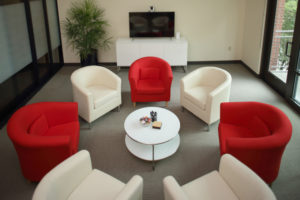
Small focus groups (aka mini-focus groups) have 3-6 participants. There are many advantages to conducting a focus group with a small number of participants. For instance, smaller focus groups foster intimacy, more openness, and are easier to manage.
An ideal setting for a small focus groups is sitting the participants around a circle. You may want to have a coffee table in the middle of the group that the participants can use.
Now, the best way to record a small focus group discussion is to use digital voice recorders (here are a few I recommend). You can place it on the coffee table in the middle of the group or on the floor on top of a magazine or book. I recommend that you use a couple of voice recorders placed on the table or on the floor across from each other – one of the recorder acts a backup. If you conduct the focus group is a quiet room, you’ll get a high quality recording of the focus group using either method.
Which voice recorder would I recommend you get? The Sony ICD-UX560 is the best recorder for focus group discussions. Here’s a detailed review of the Sony ICD ux560. Get a couple of them and you’ll not be disappointed.
How to record a medium sized focus group
A medium sized focus group will have 6 to 18 participants. The main advantage of having a larger number of participants is you’ll get a more varied input. But keep in mind that you’re going to have a difficult time controlling the discussion.
An ideal setting for medium sized focus groups is a boardroom style setting, where the participants sit around a large table. You will want to get a large room where you can fit all the participants. And that represents recording challenges.
The best way to record these type of focus groups is using boundary microphones. Because of their construction, boundary mics can pick up the sounds that are reflected off the surface that they’re mounted to, such as a wall or table. That’s why they are ideal for recording medium sized focus groups.
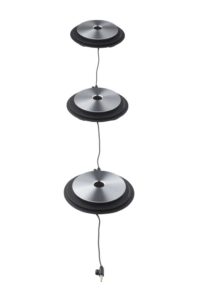
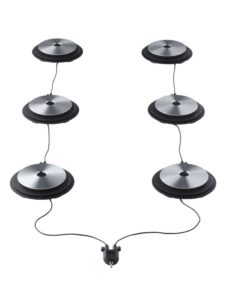
For 6-10 participants, I recommend that you use 3 boundary mics connected to a digital recorder. For more than 10 focus group participants, use 6 boundary microphones evenly distributed on the boardroom table. If you conduct the focus groups is a small cozy room, you might get away with using a couple of boundary microphones.
The best boundary microphones for focus groups and meetings is the Olympus ME33. Why, you can daisy chain up to 6 of these microphones! That means you’re guaranteed complete coverage for even the longest of boardroom tables. They are also very easy to set up. Just place them on the table, daisy chain them, then connect them to a digital voice recorder. For a recorder I recommend that you get the Zoom H1n that will power the 6 ME33 microphones.
How to record large focus groups 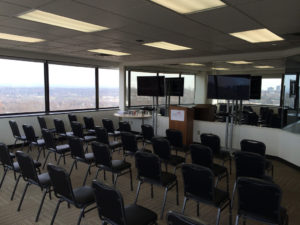
Large focus groups, with more than 18 participants are rare. But researchers do conduct them, especially when they want to get the views of a community. For example, we recently transcribed focus groups for a researcher that was researching immigrants’ experiences in their host country. And it was important for his research to hear all the diverse views in the community. So he choose to conduct very large focus groups, each with more than 40 participants.
The easiest way to record large focus groups discussions is by the using handheld wireless microphones that are connected to a mixer, that is connected to a recording device – a computer or a digital recorder. Microphones have advantage of allowing you to manage the group interaction. If you plan to conduct larger focus group discussion, it’s important that you hire a sound engineer to assist you with the recording of the focus group. They’ll probably suggest that you hire the equipment – it’s cheaper than buying.
Another alternative is to conduct the meeting in a room that has conference facilities. They’ll most likely have very good recording equipment that you can use. Alternatively, your music department may have equipment that they can lend out to you. However you get the equipment, find someone who is knowledgeable in its use to record the focus group for you.
So that’s it for this post. If you have any questions please post them in the comment section below. If you have additional suggestions on how to record focus groups, or simply enjoyed the post, the comment section is….

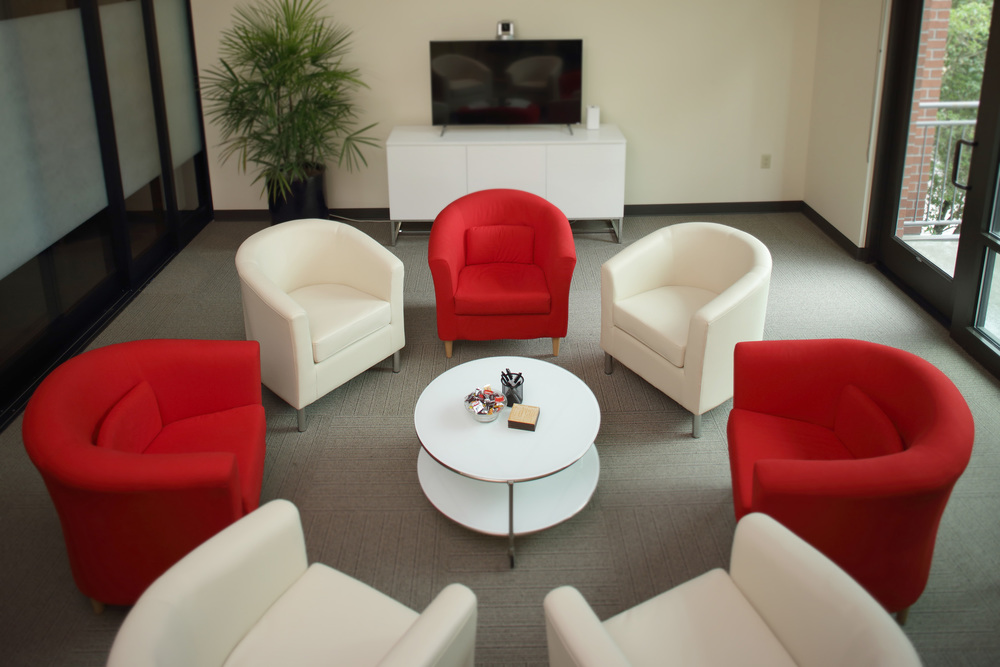
It’s very great thing for conducting focus group
Hi, I am interested in learning more about video focus group recordings if you are still willing to talk about it! Your website has been a great help in better understanding audio recording for focus groups. Looking forward to hearing back from you.